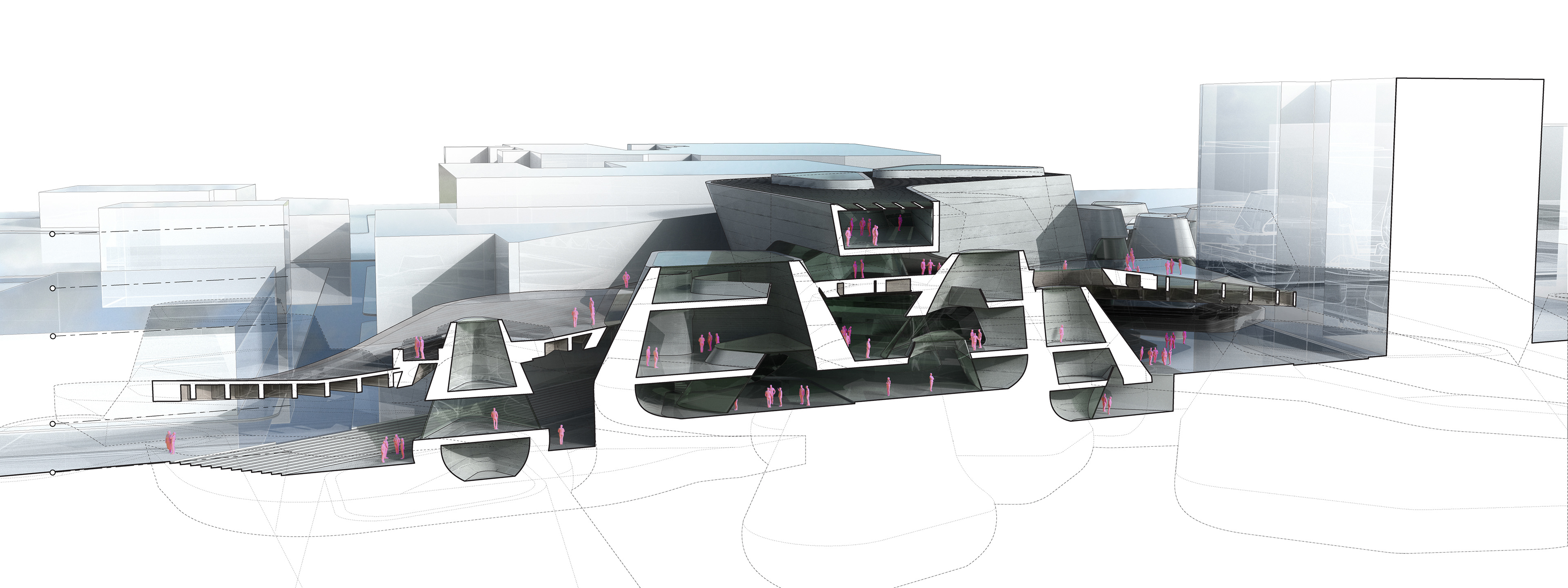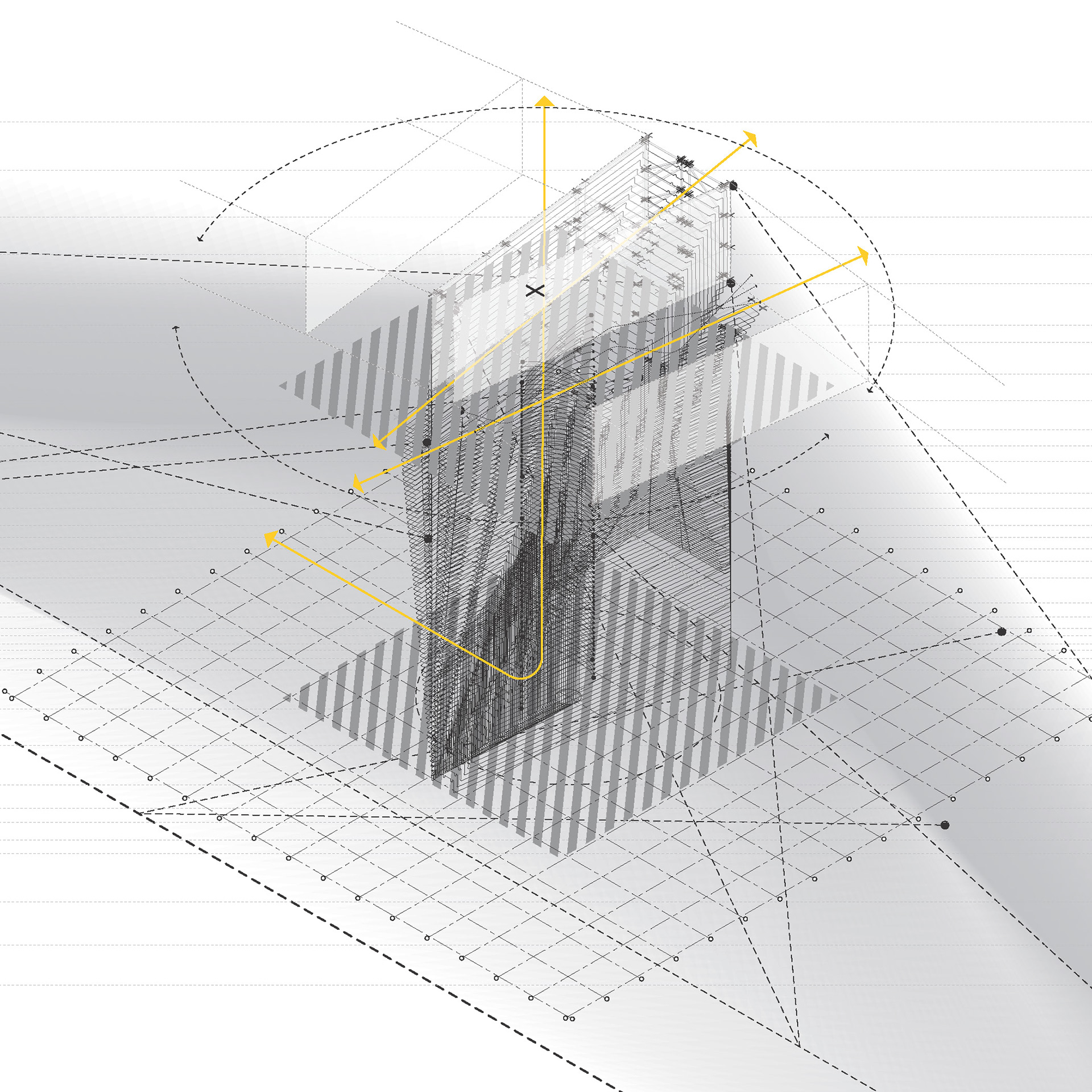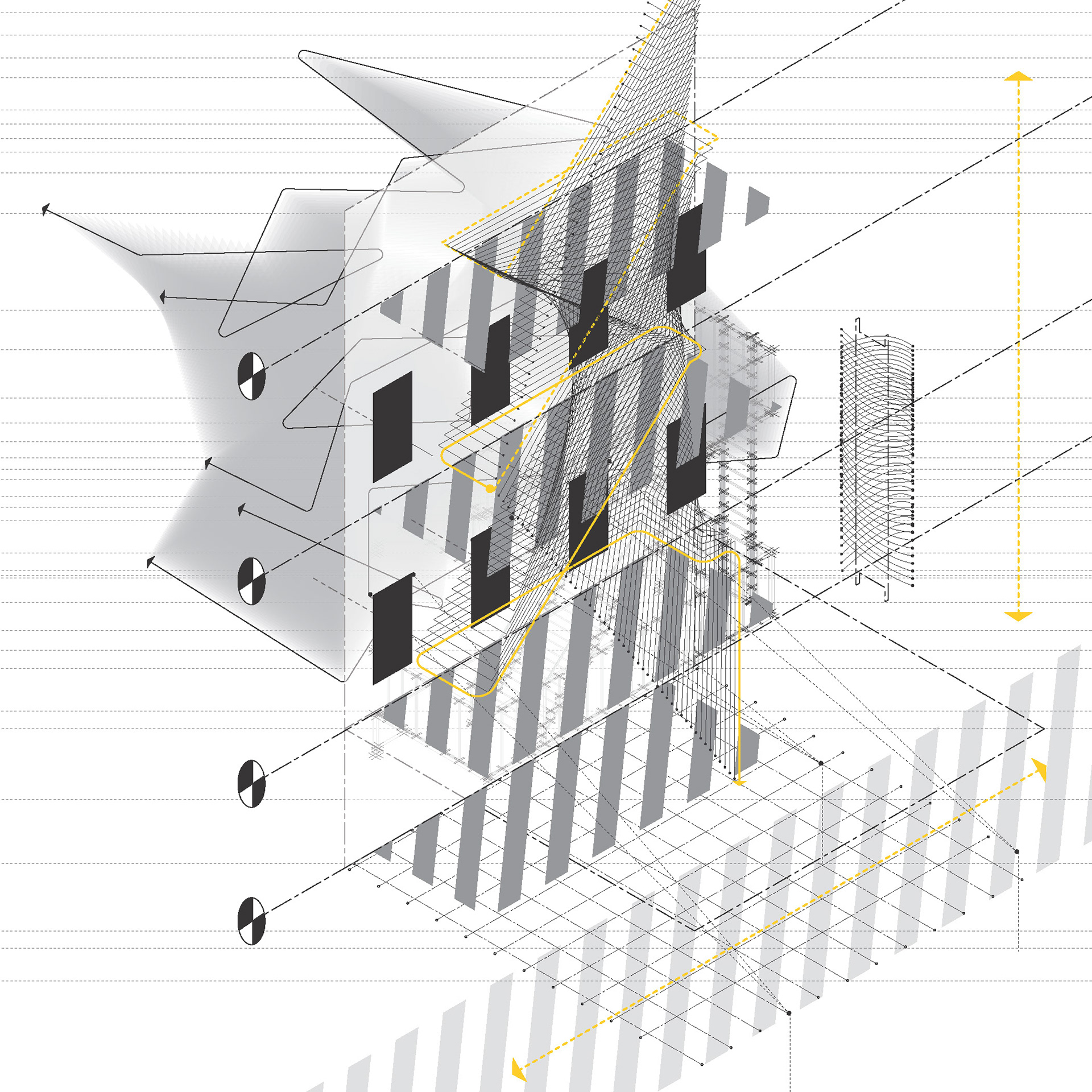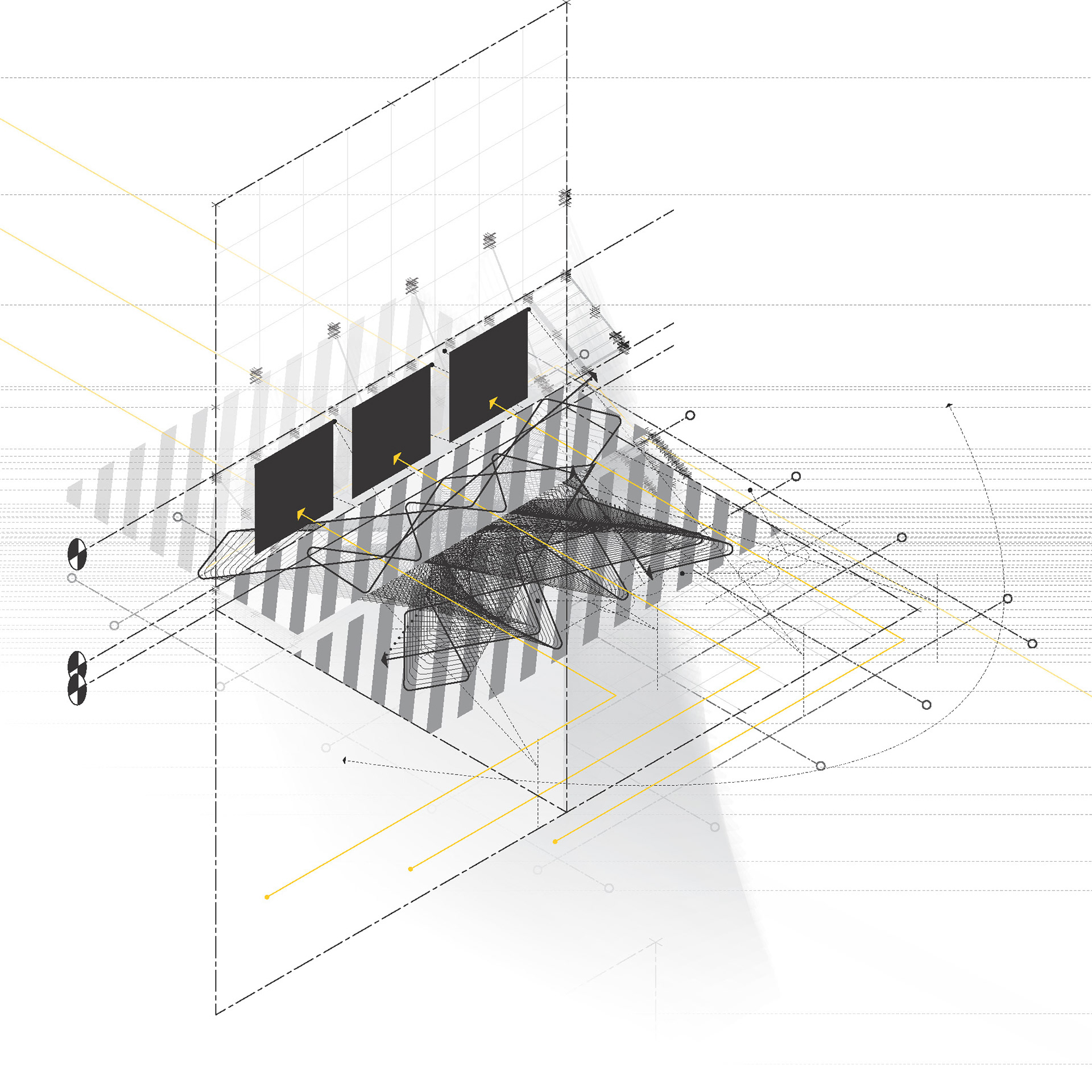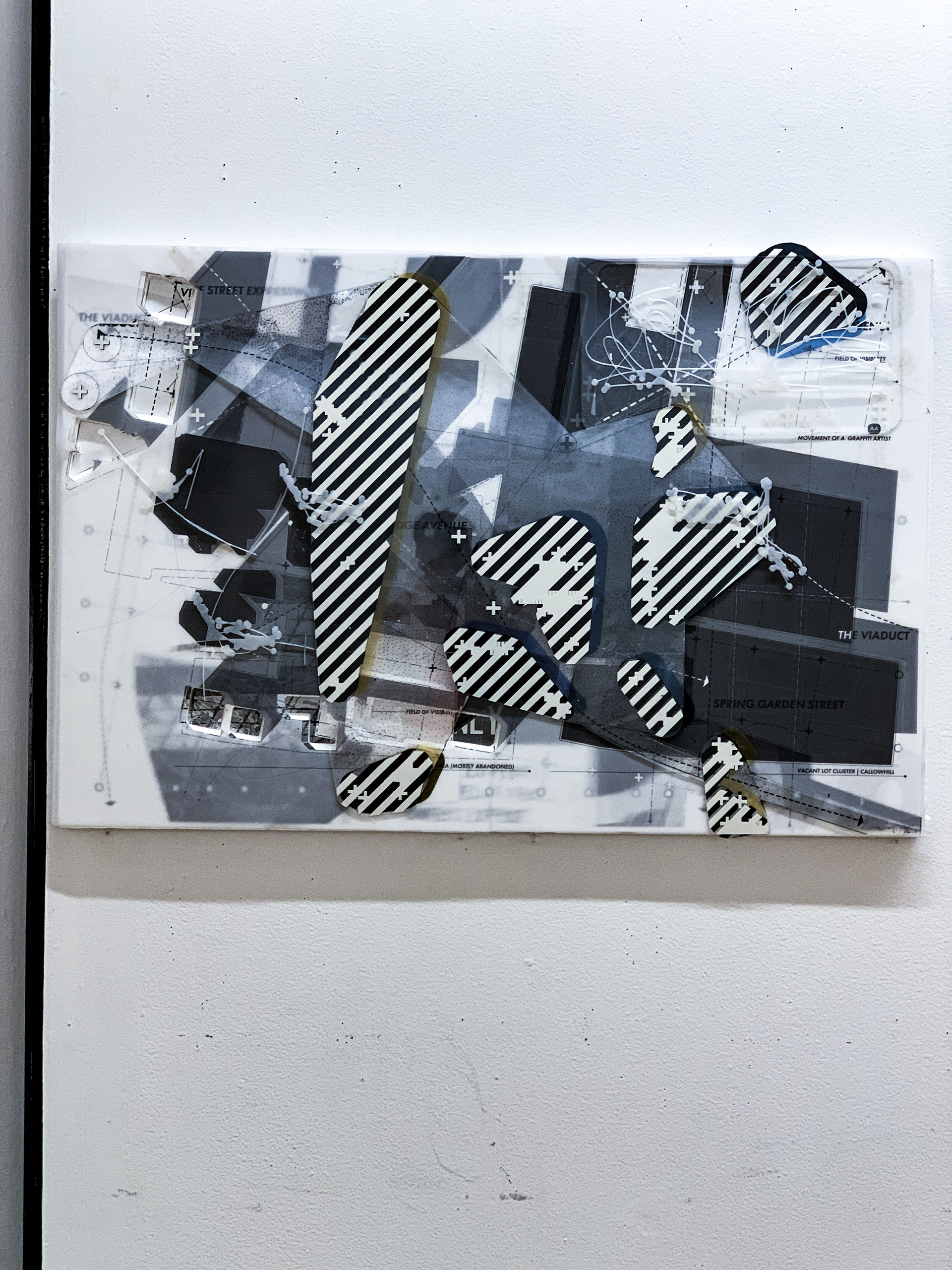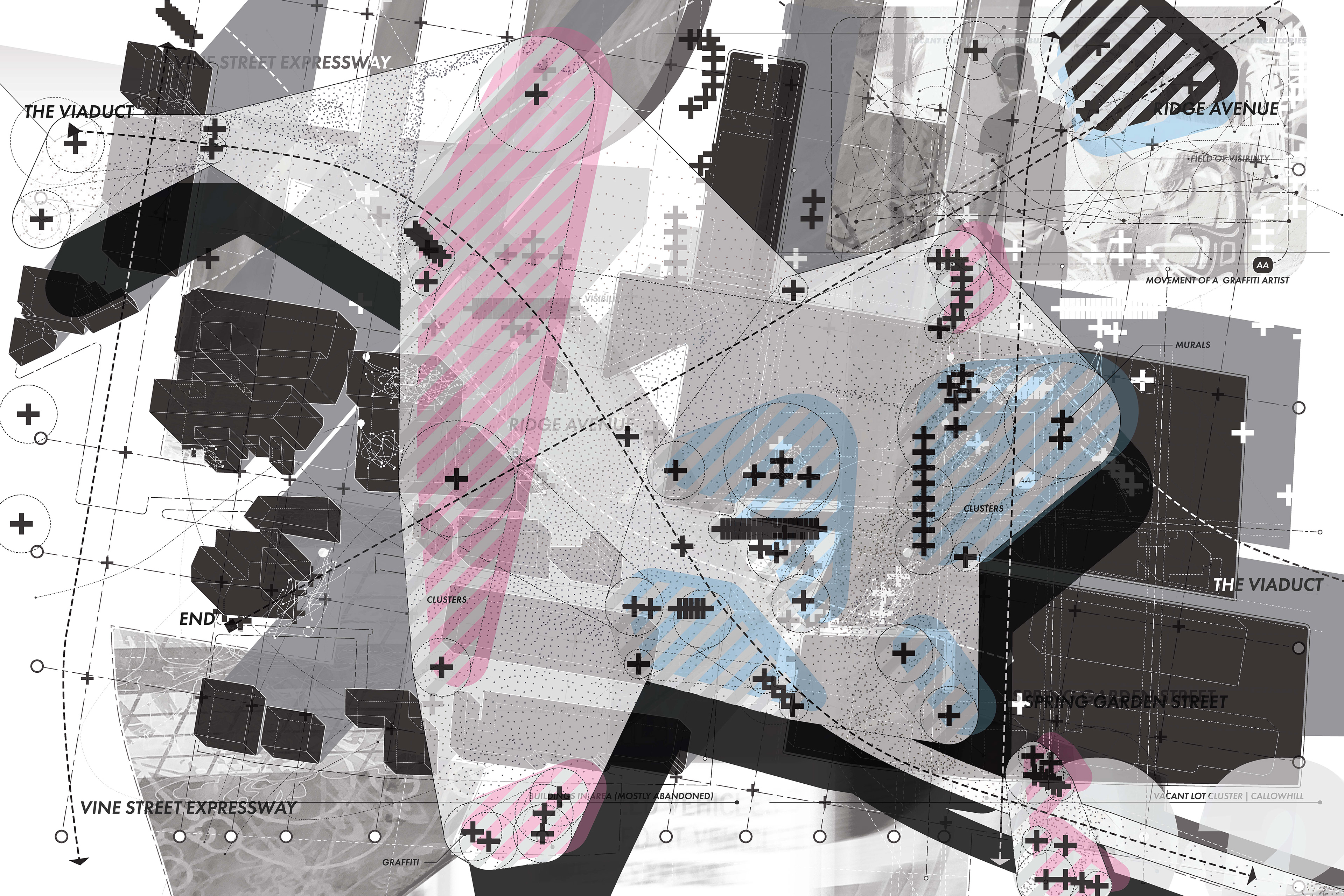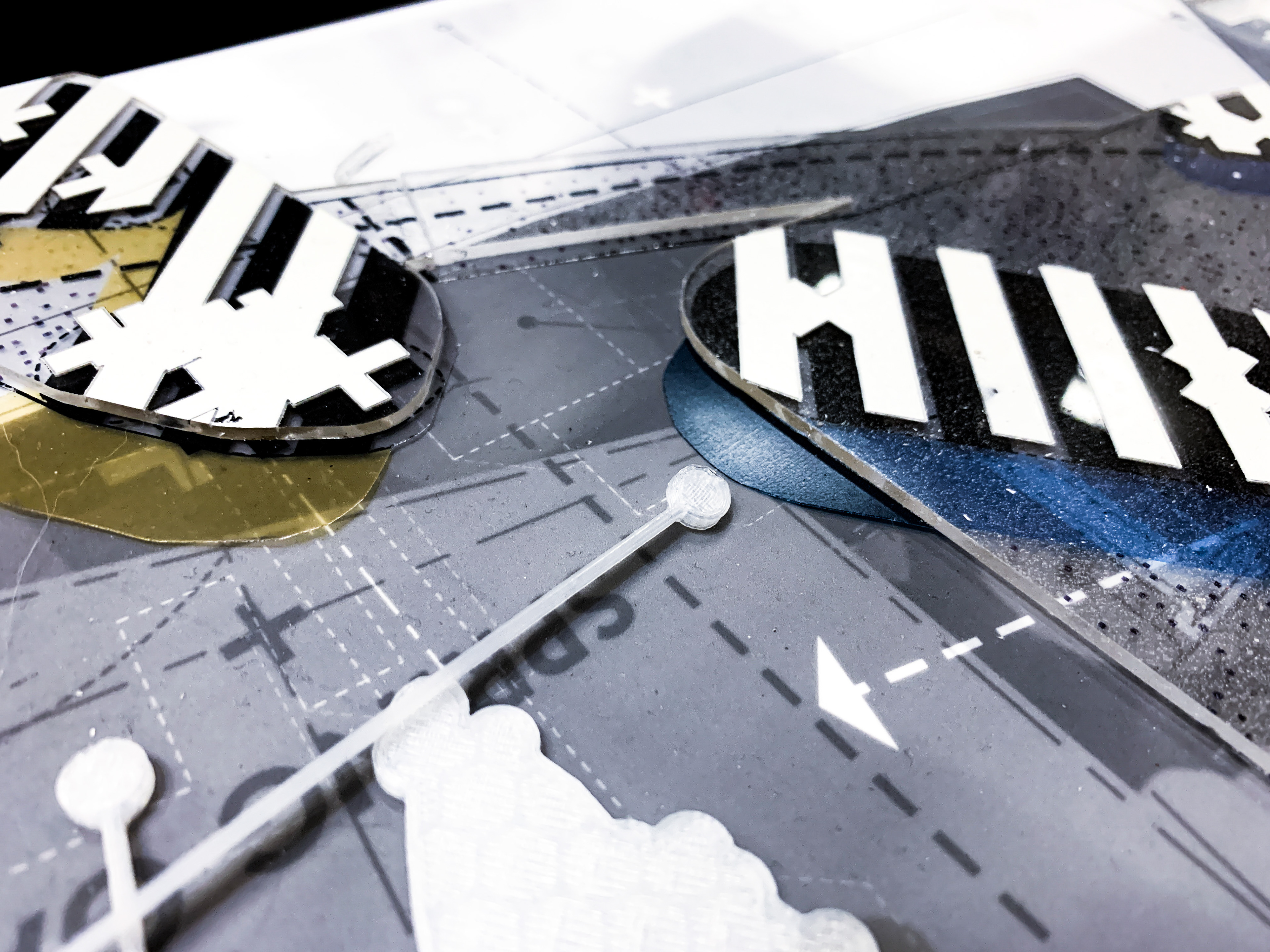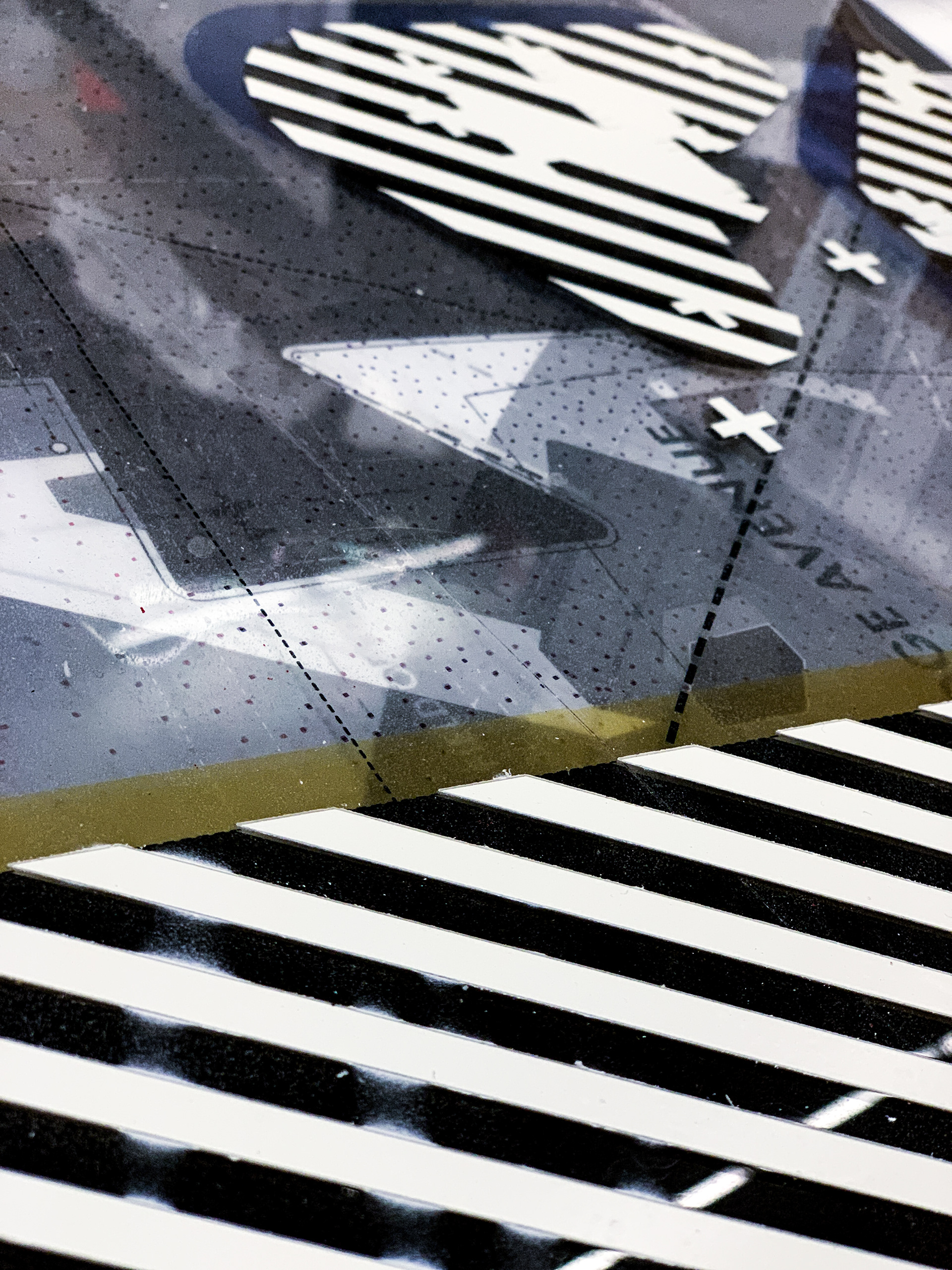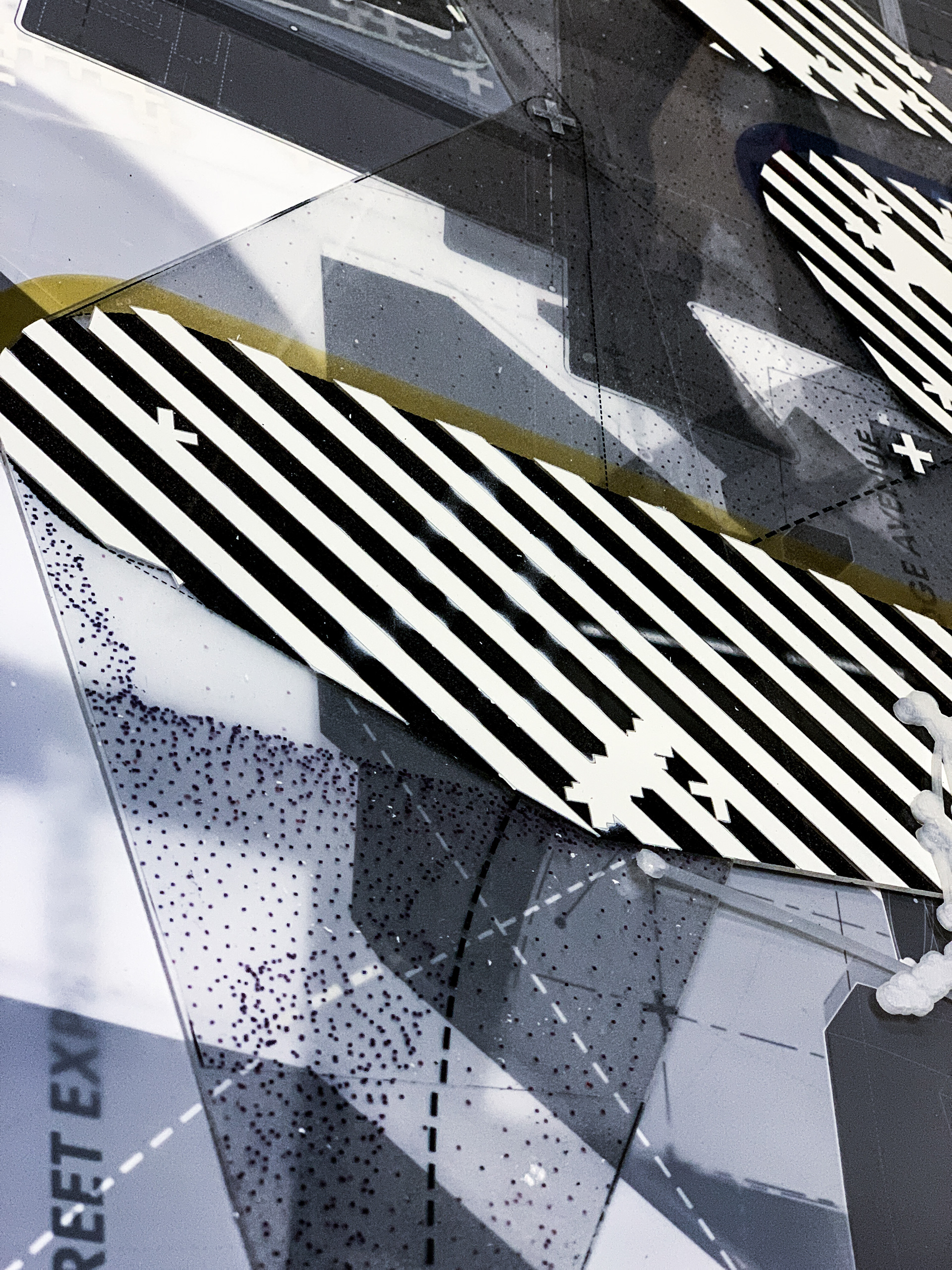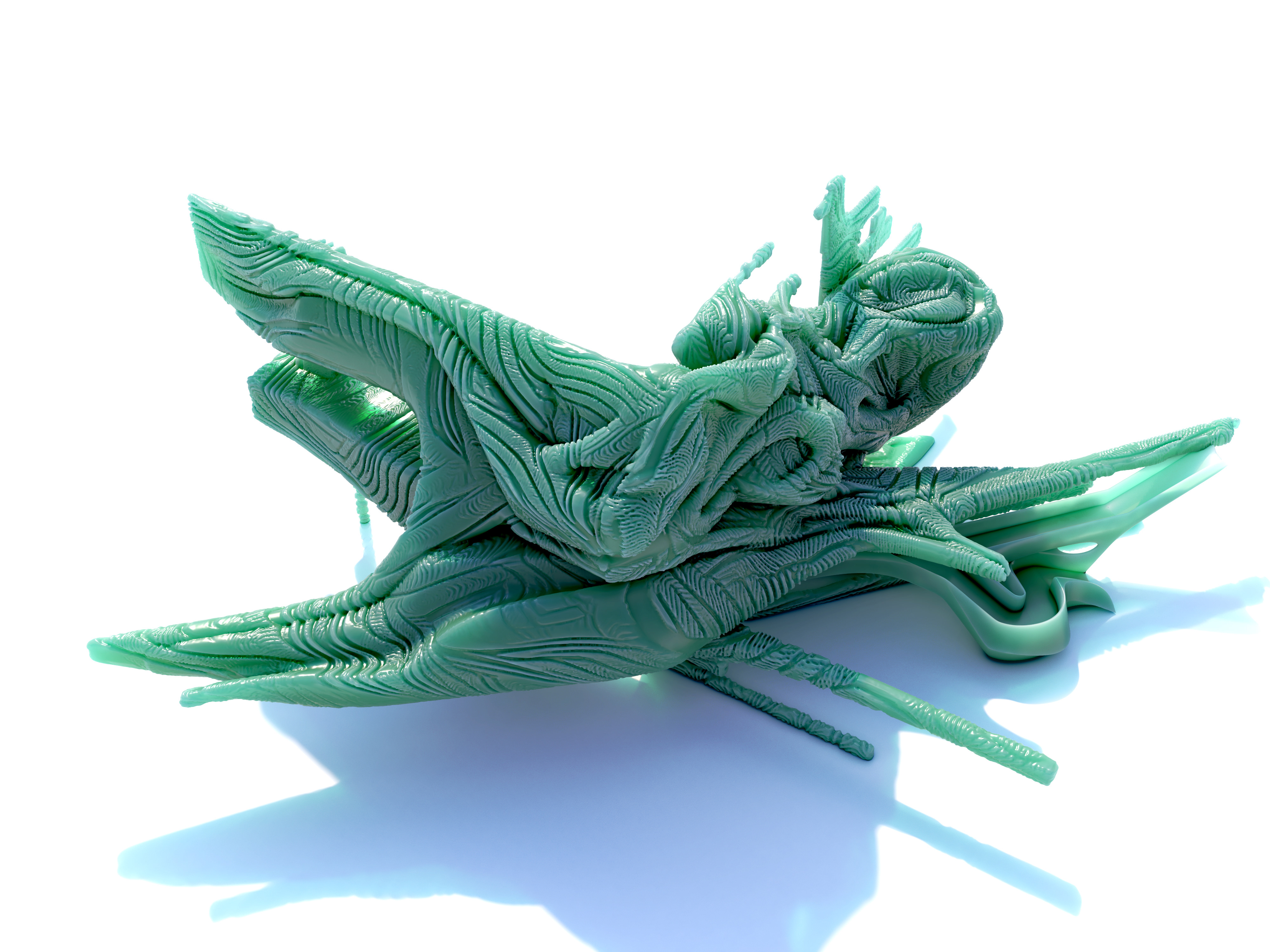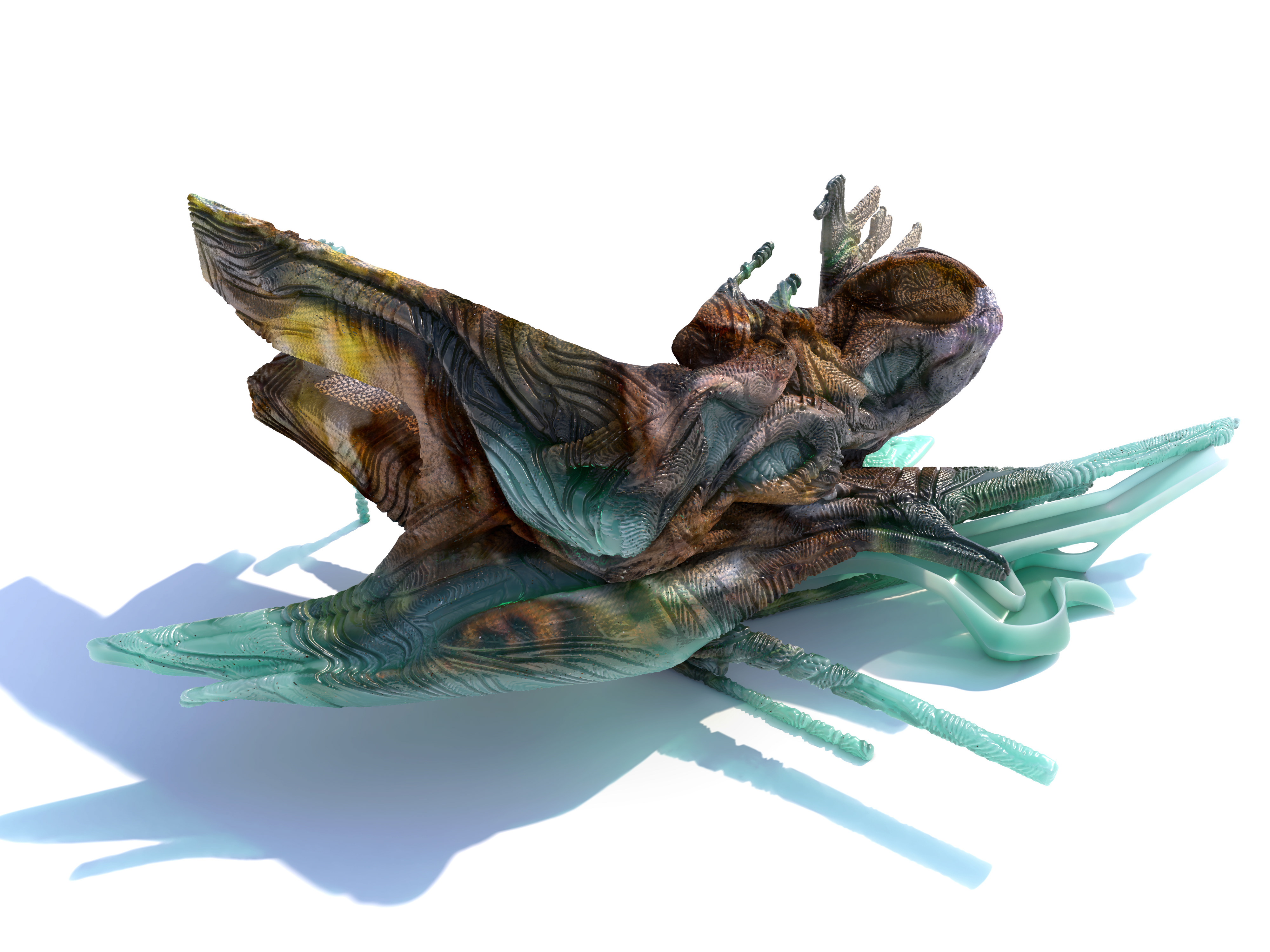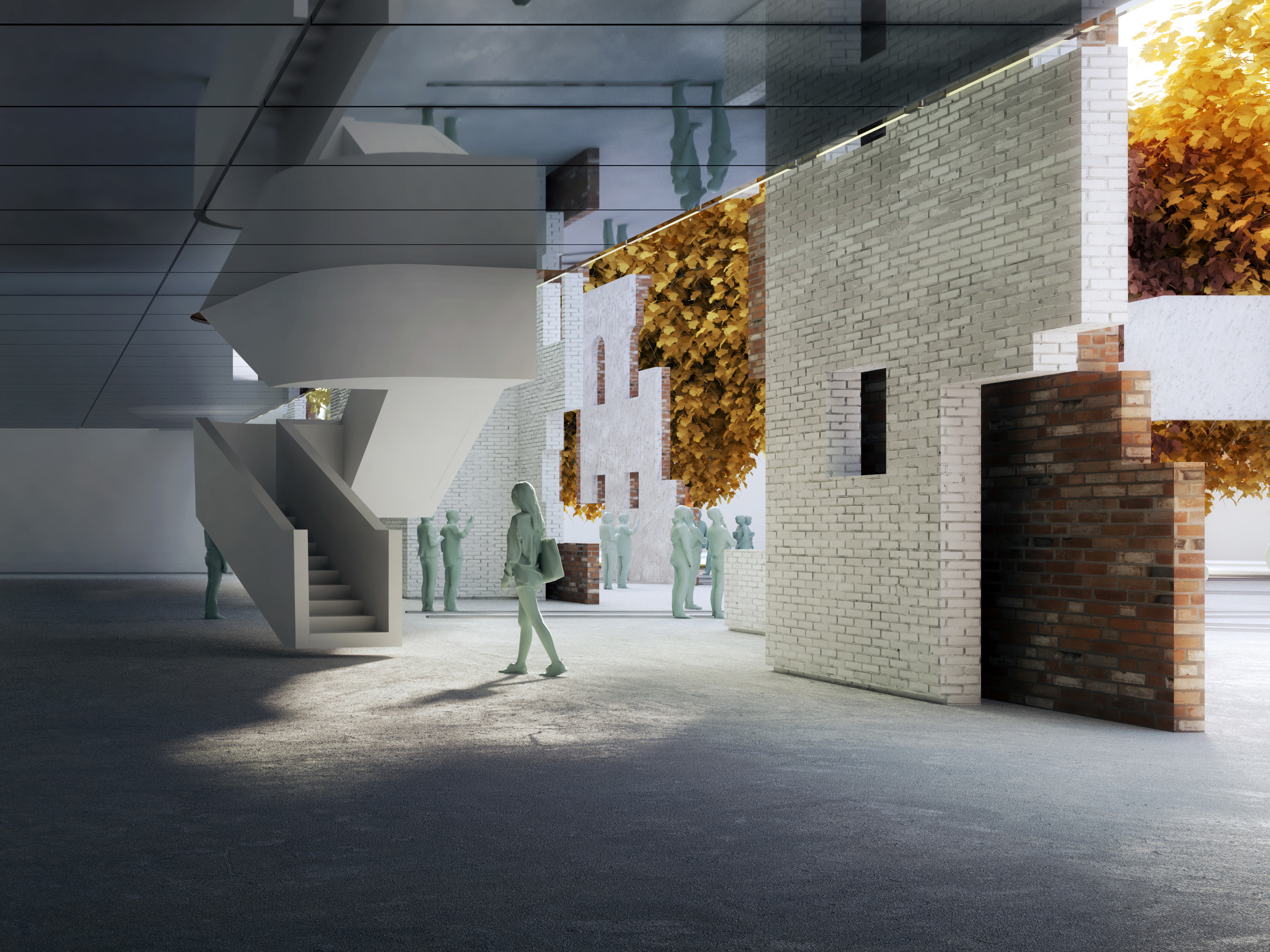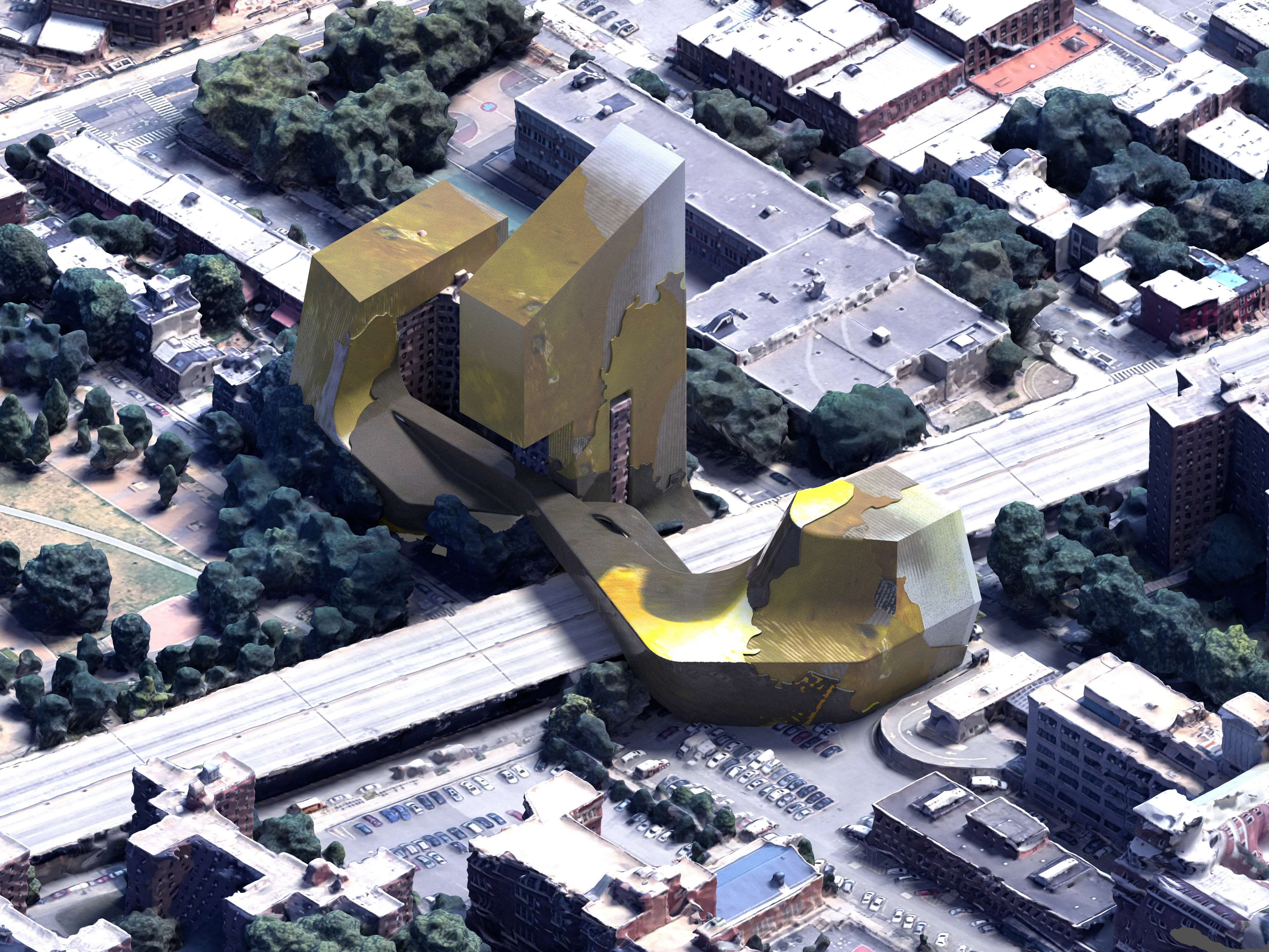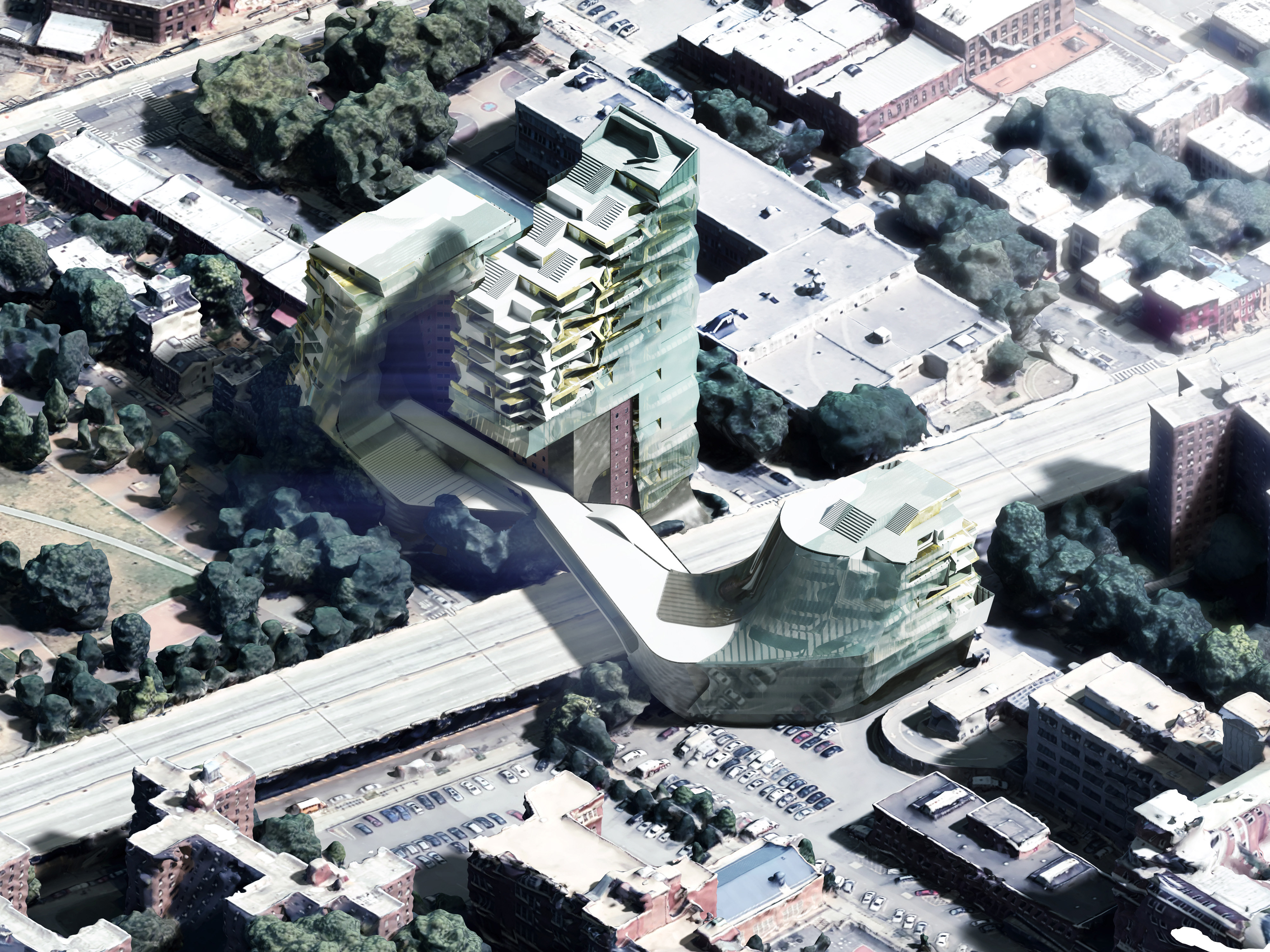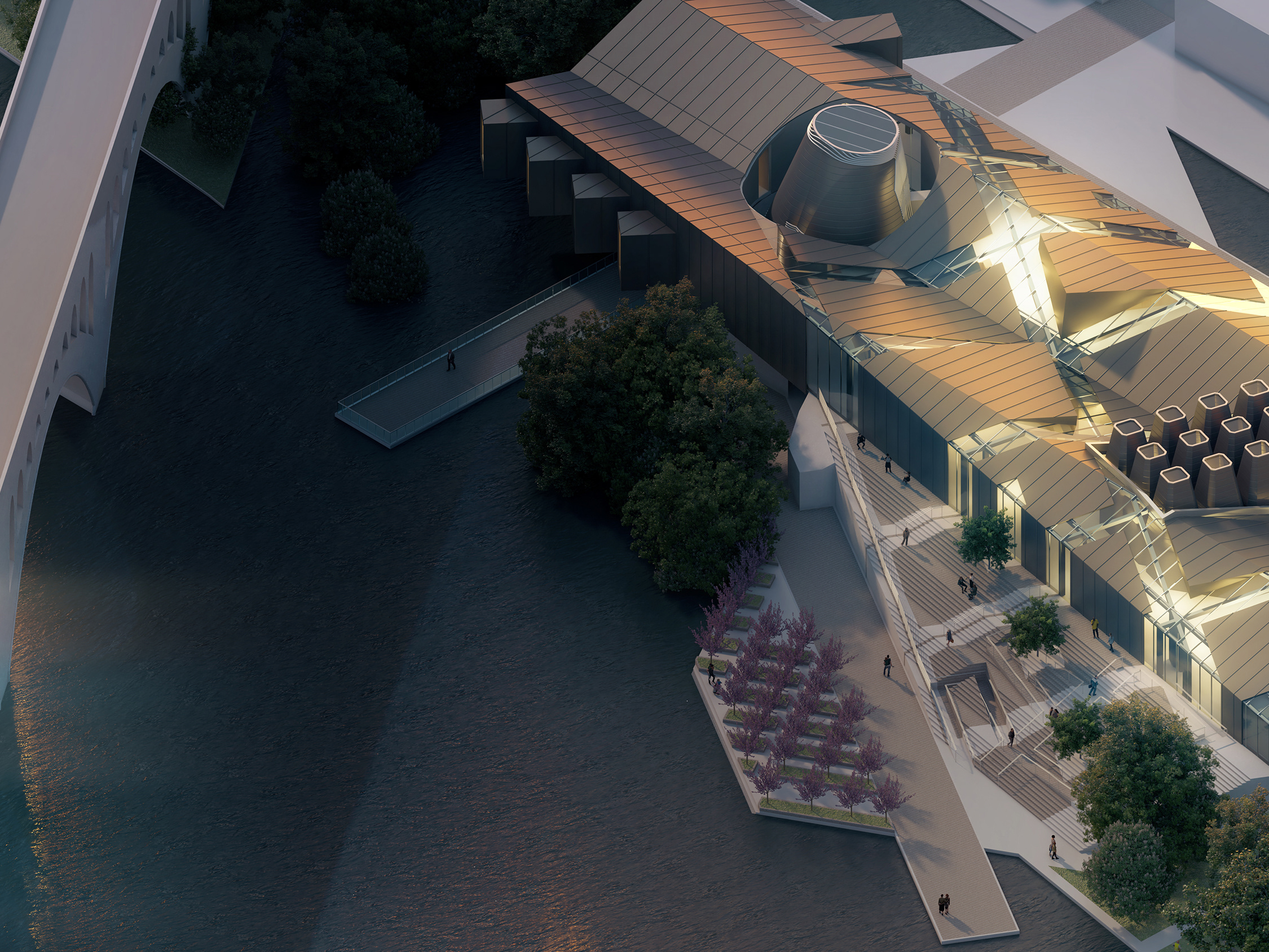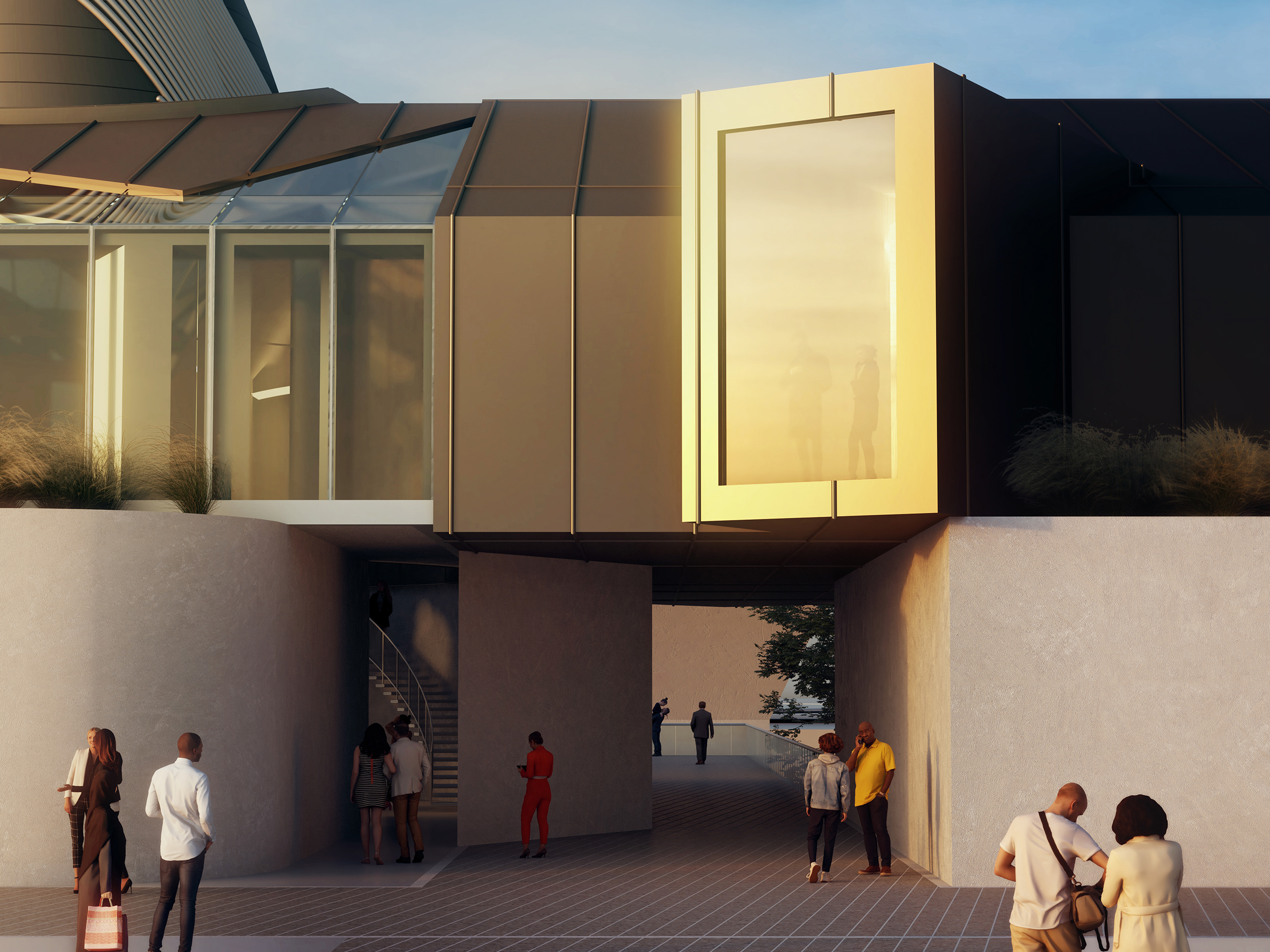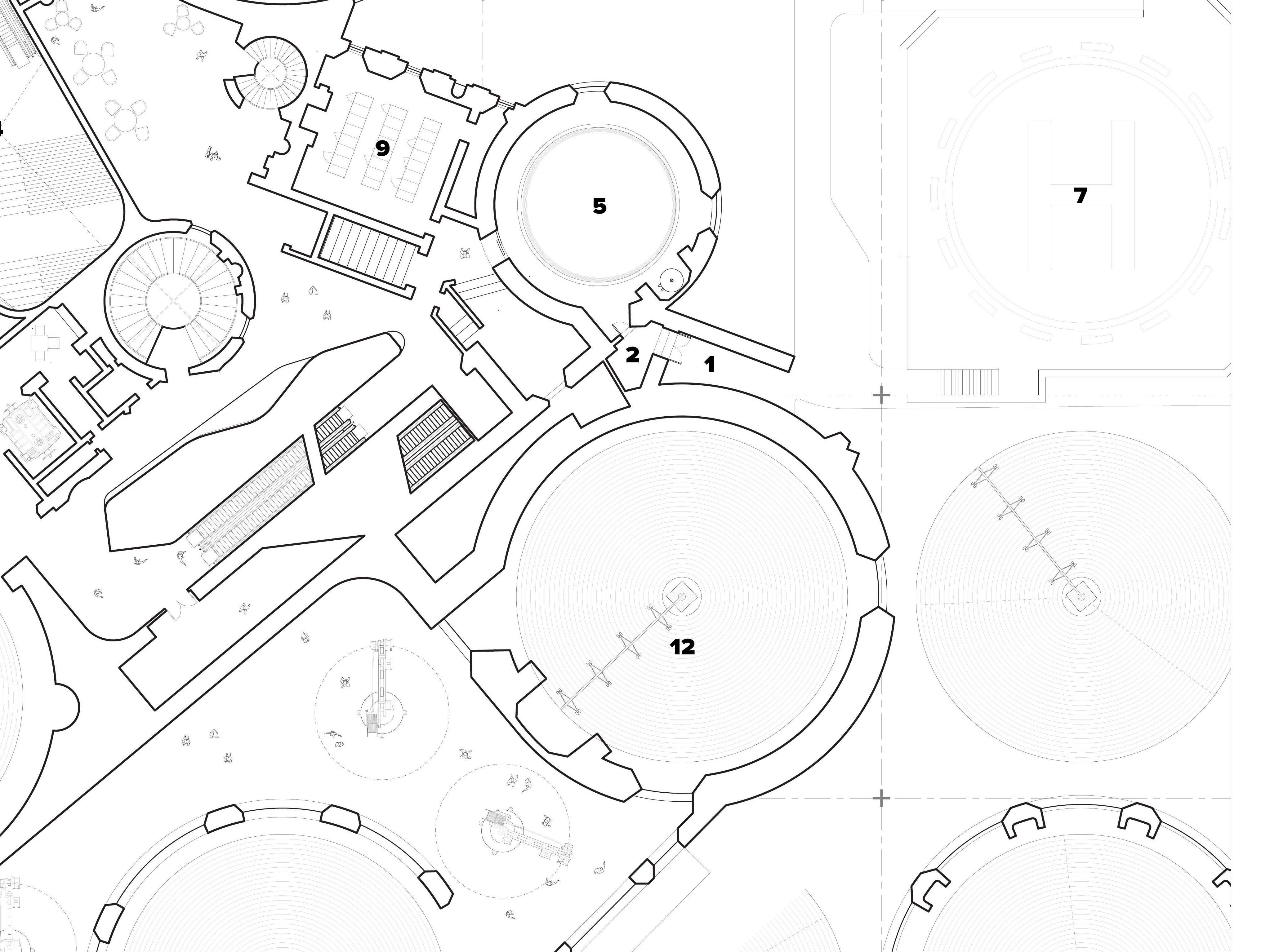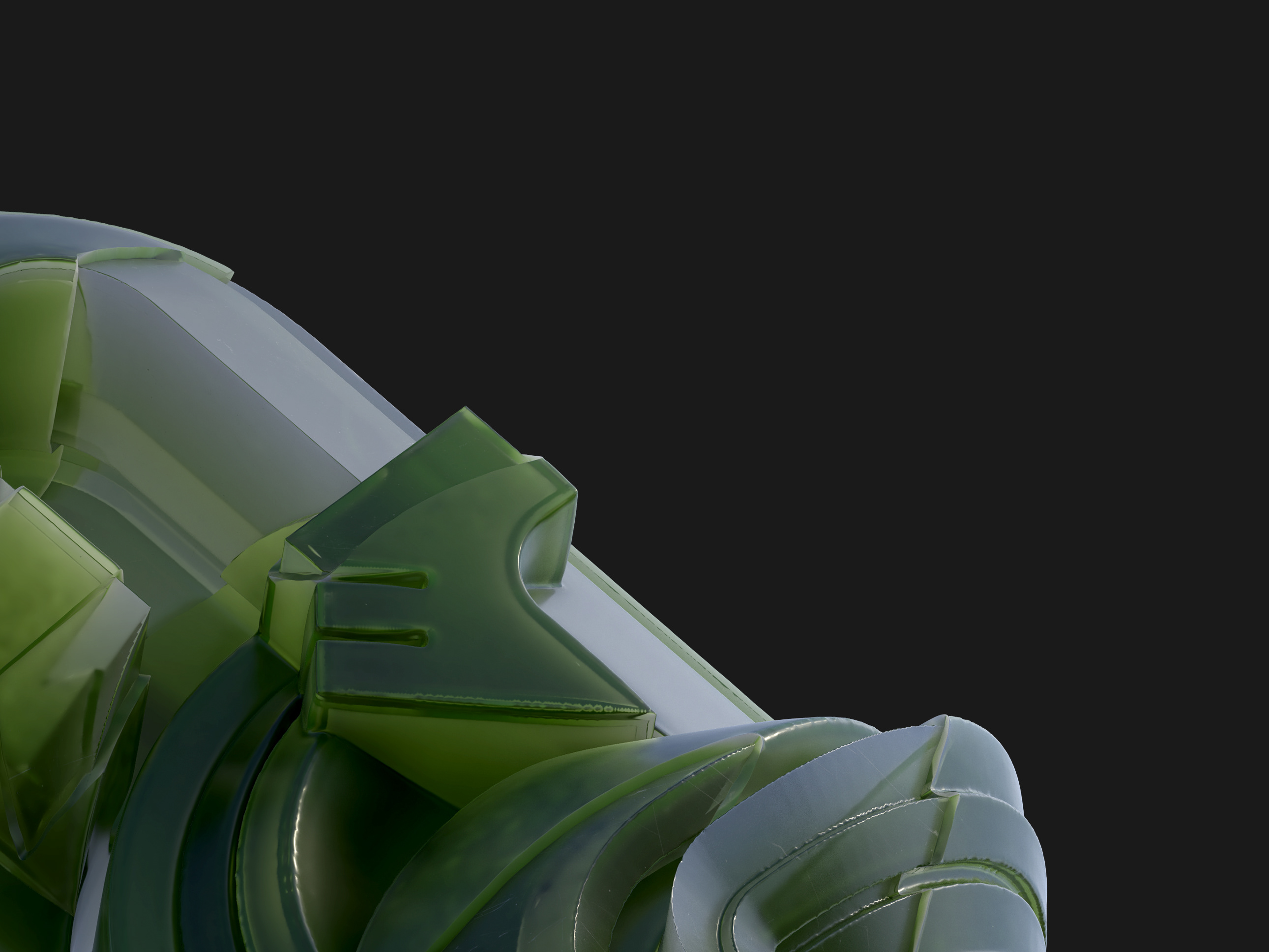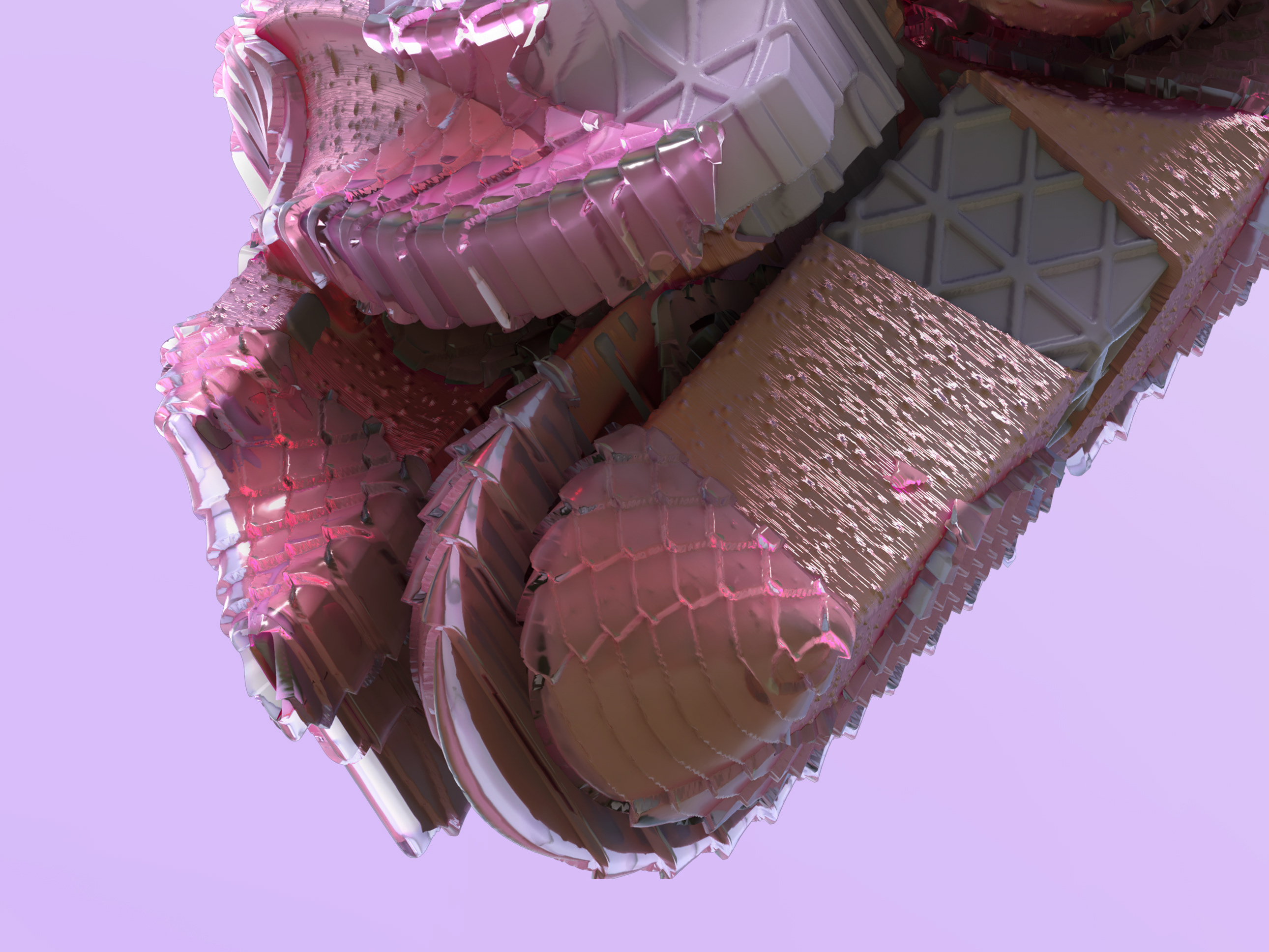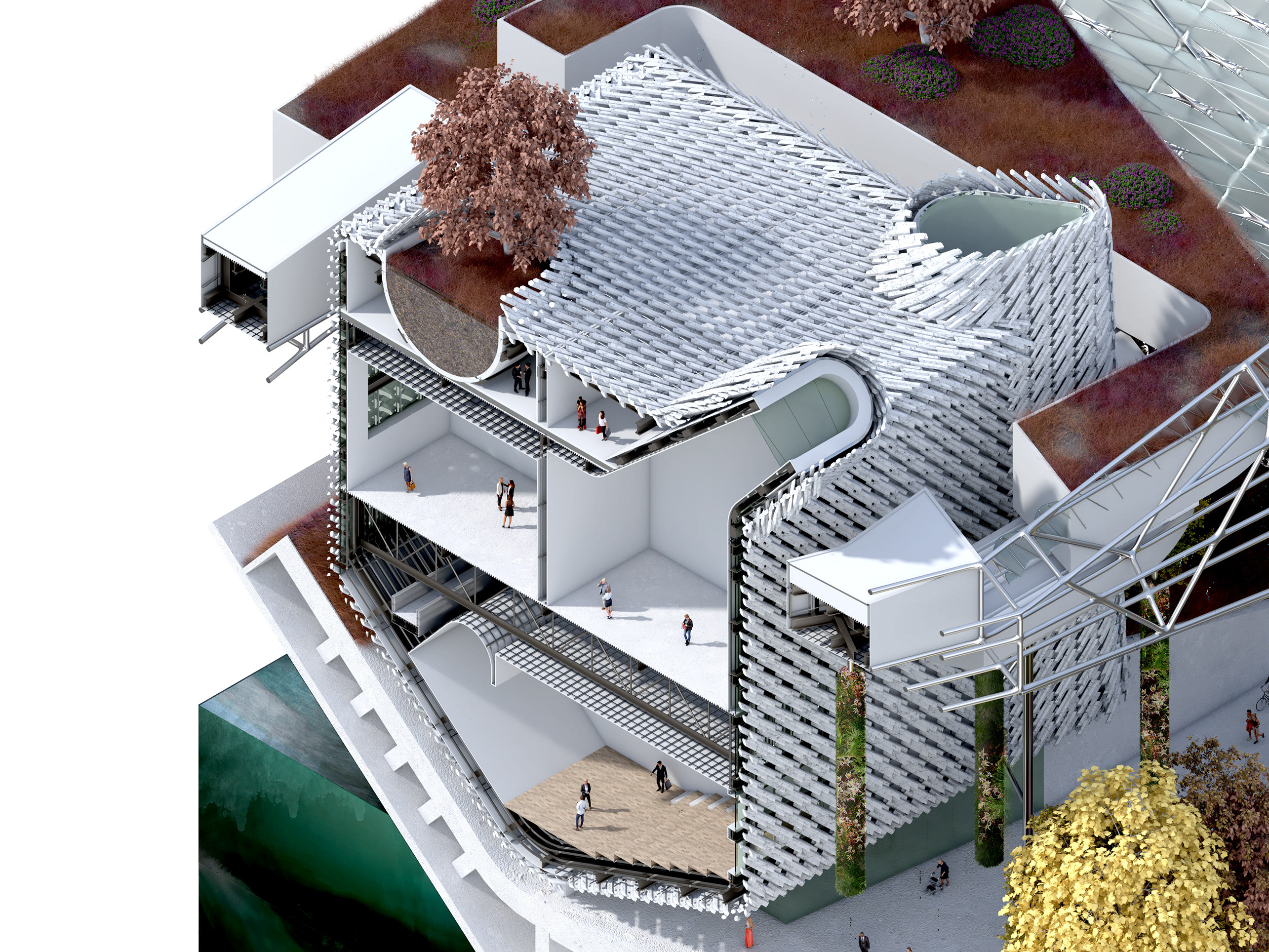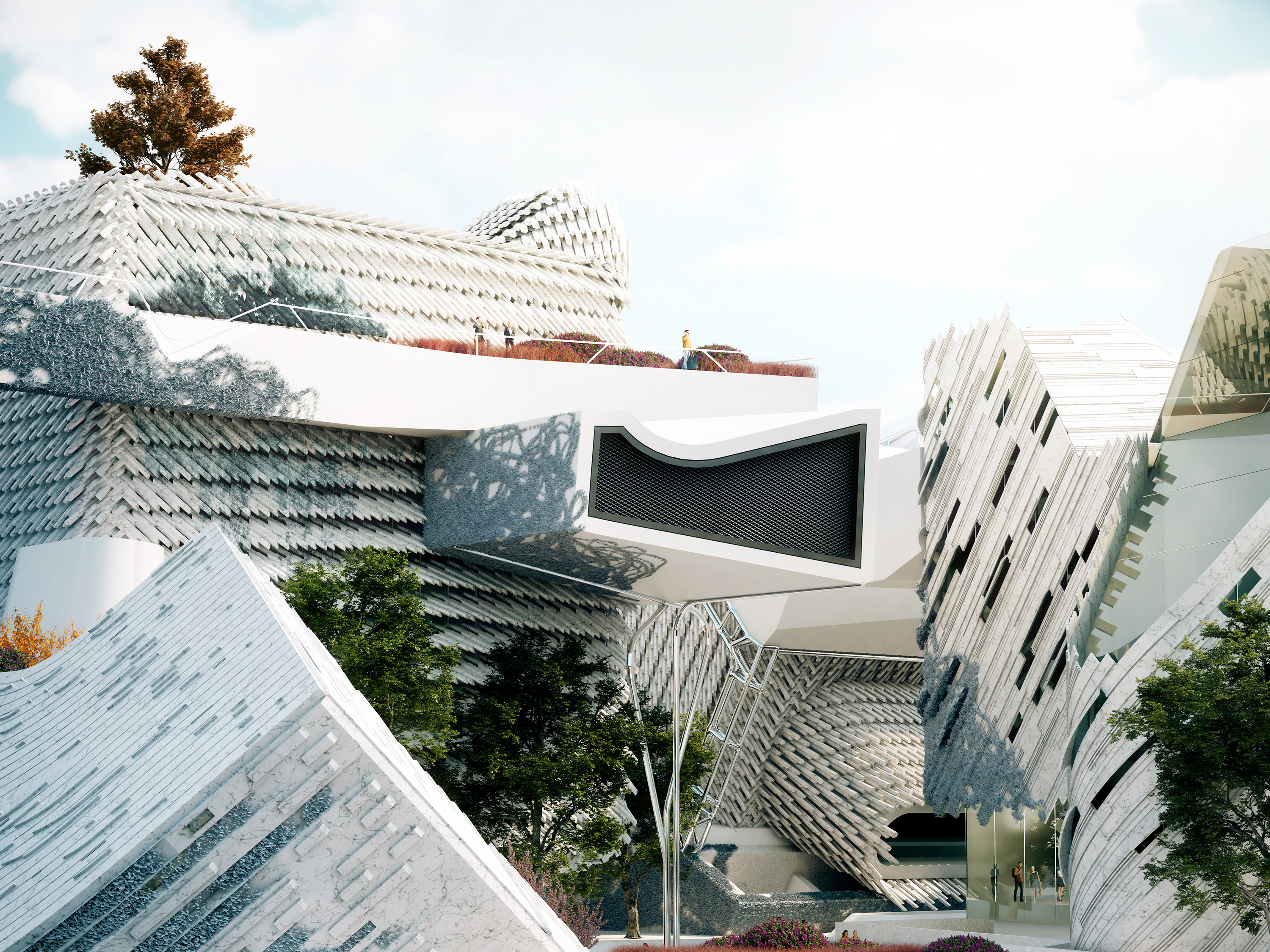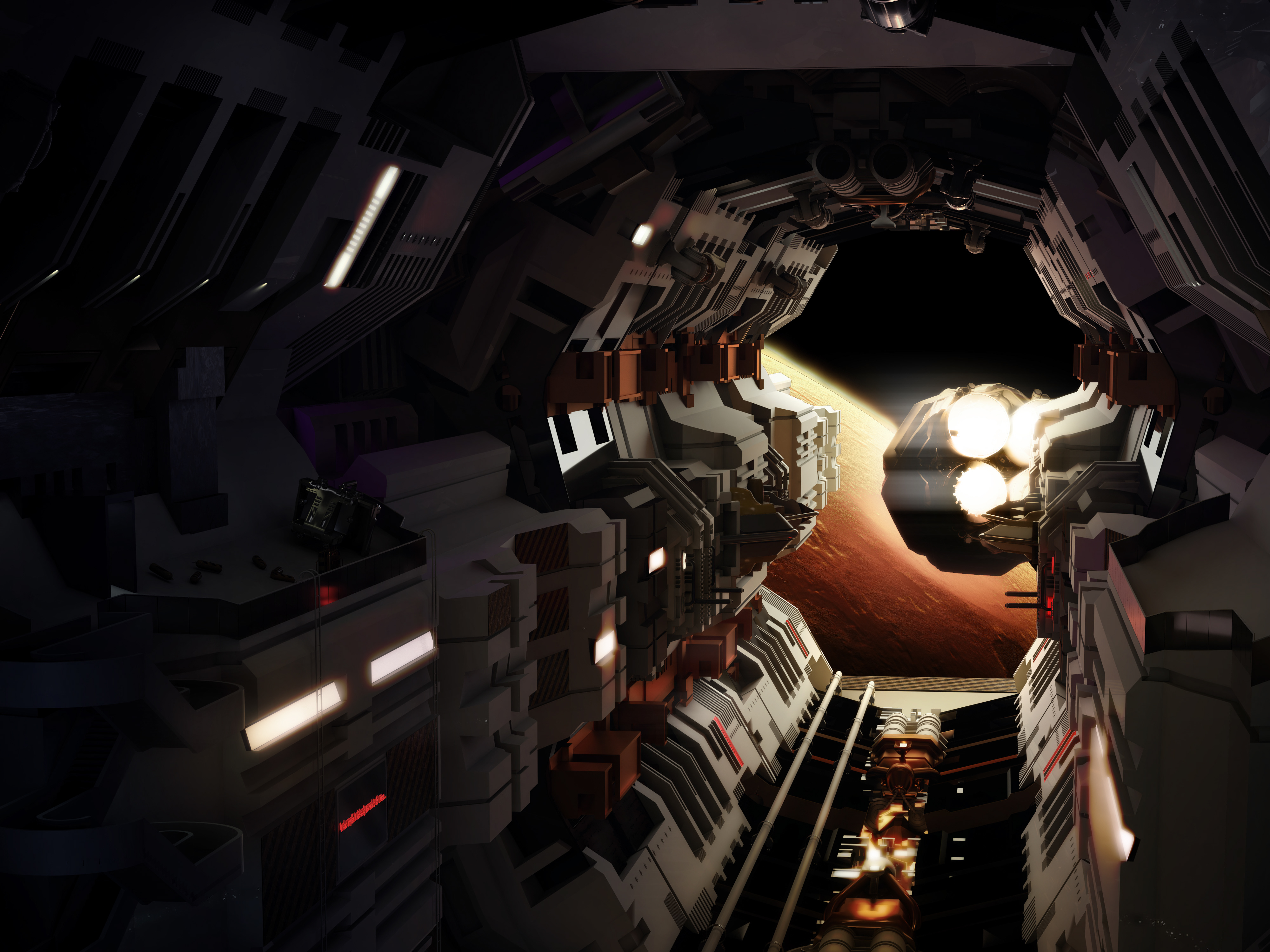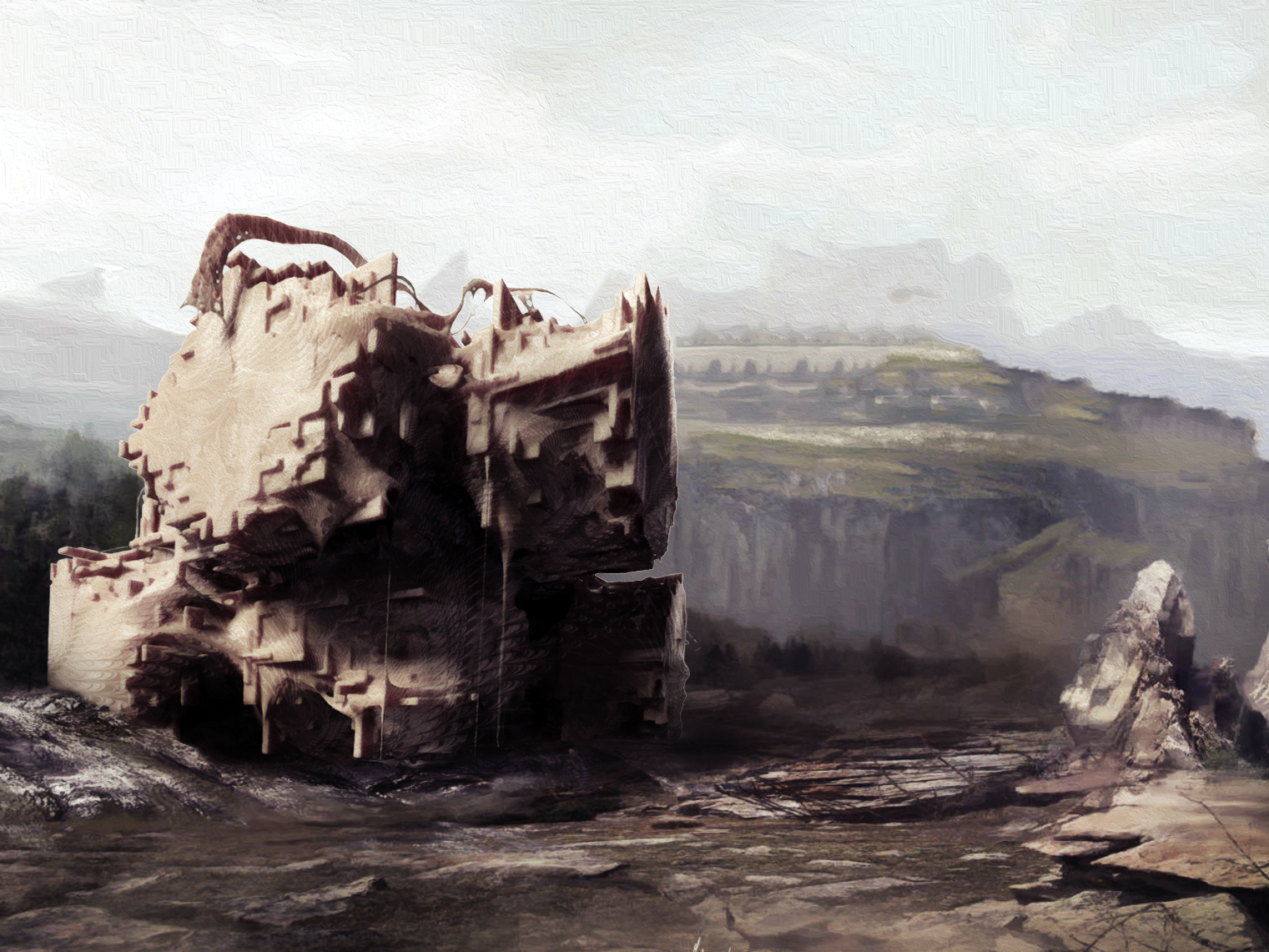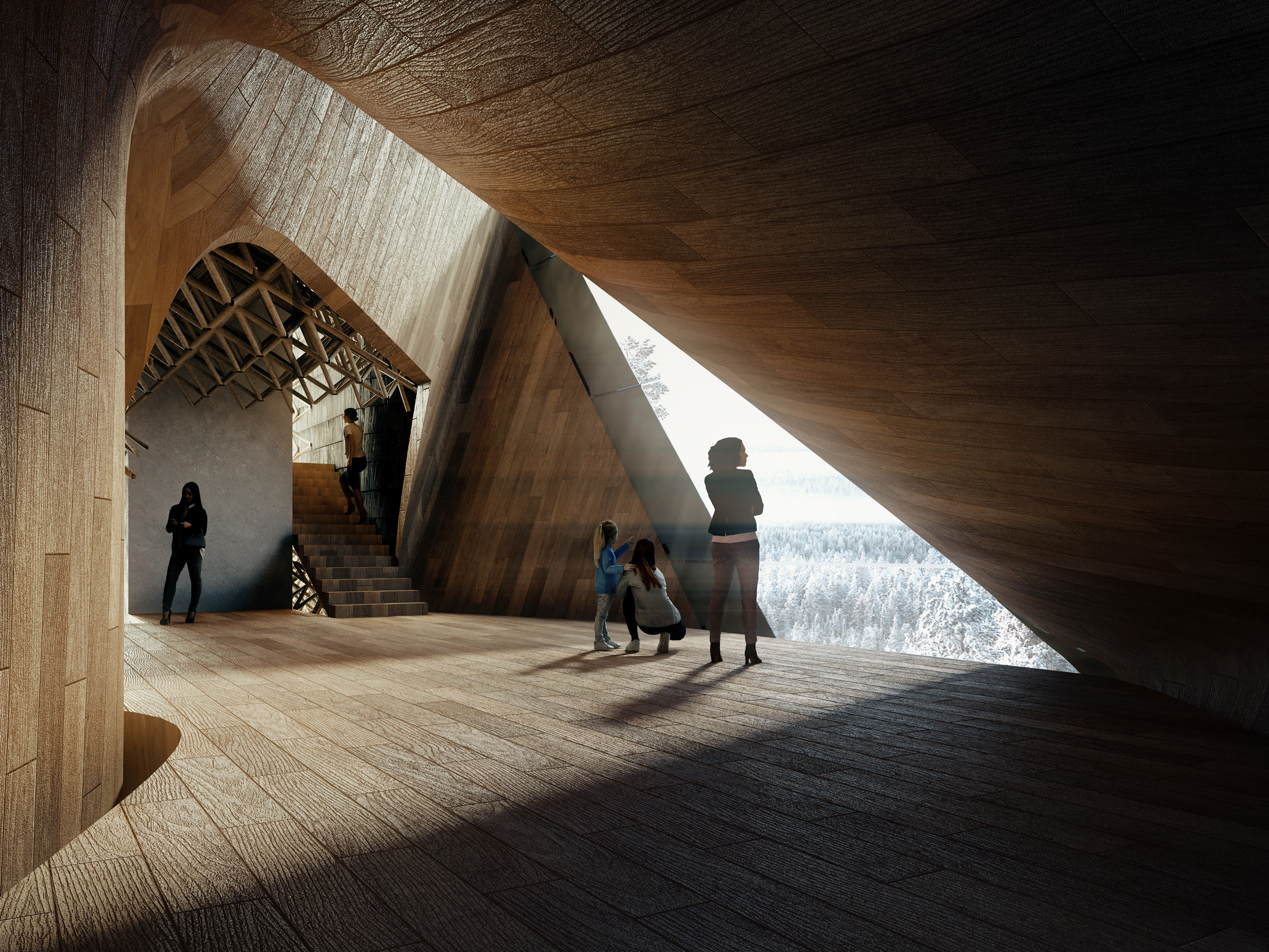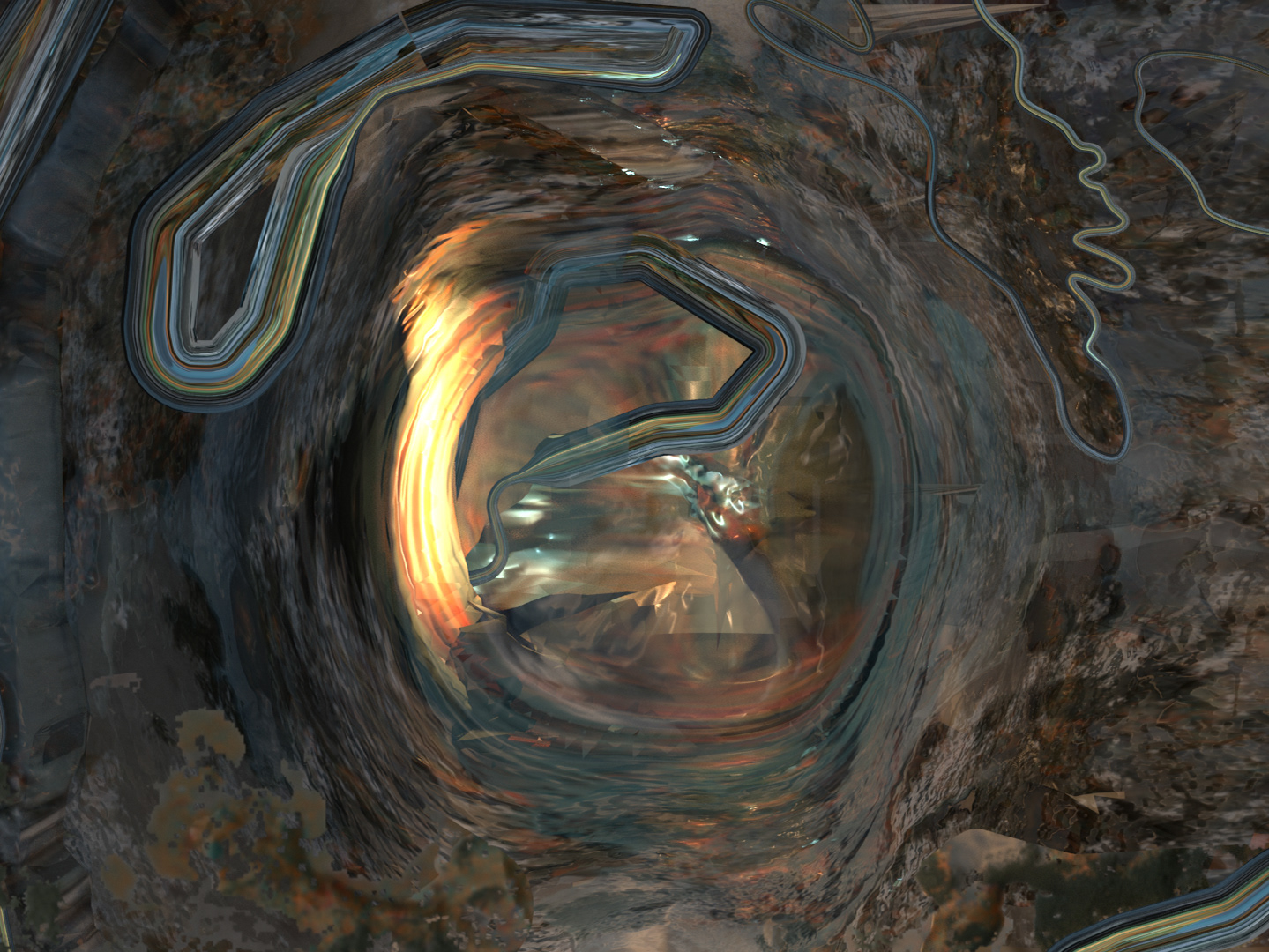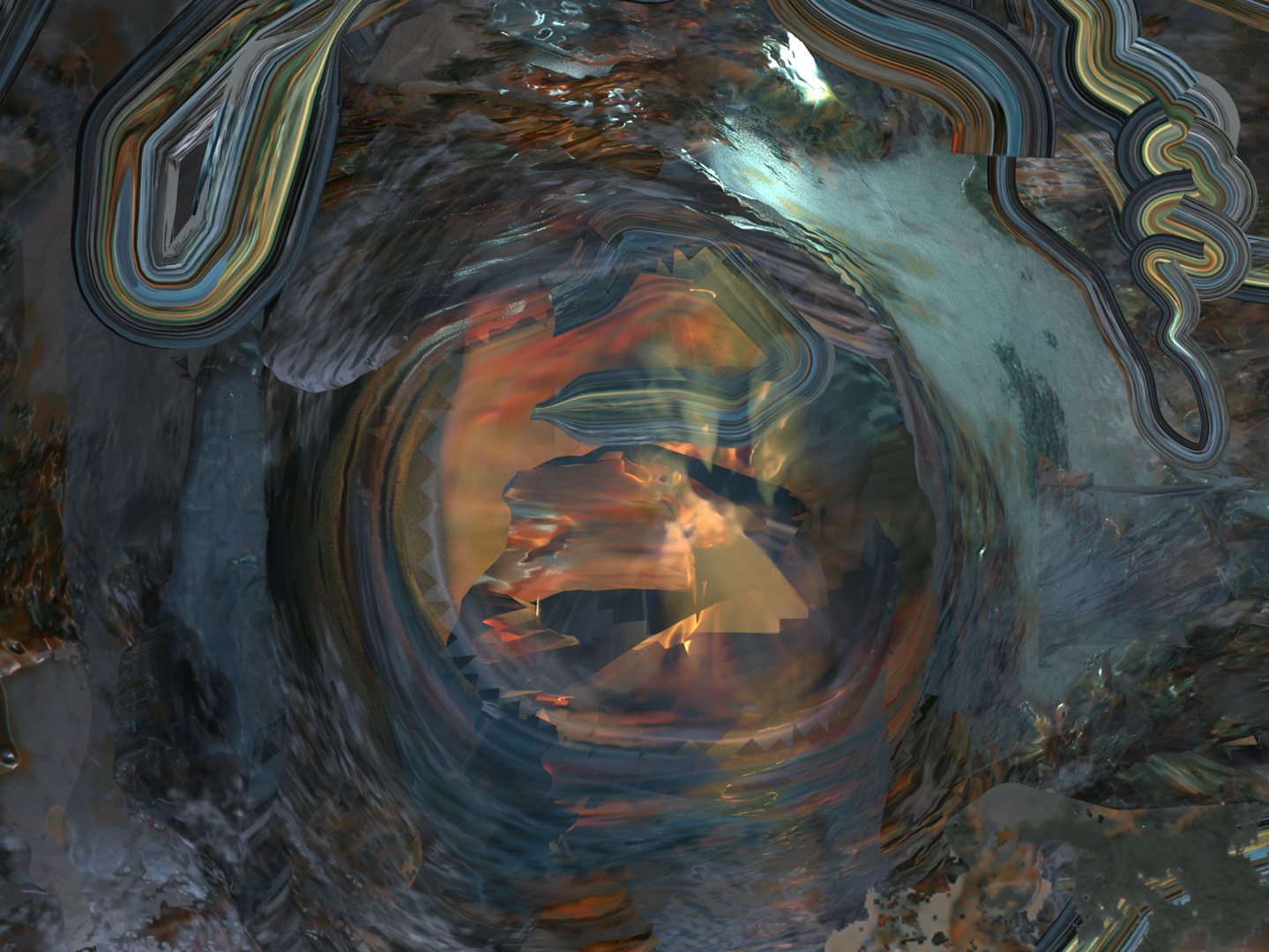THROUGH THE ROOF
A market that investigates the conflicted nature of an erased neighborhood.
Philadelphia’s Callowhill/Chinatown neighborhood has grown into an area that encompasses a complex dichotomy of relationships. Research and analytical mapping into the neighborhood’s murals and graffiti further articulated this idea: having revealed issues of class, accessibility, relationships between public and private spaces, and the erasure of an urban morphology. These questions then posed the question of how to address these behaviors on the site and how to resolve the numerous implications. This is where architecture can point to a solution. This is through a project that creates a collective identity by expanding on the spatial qualities and networks of the existing murals and graffiti. Additionally, by suturing a new morphology through the assembly of morphological components, the project will re-habilitate a system that was once lost through erasure, allowing for a revitalization that won’t damage its existing users. And finally, a project that will provide accessible areas that will promote the agenda created by the murals (urban renewal), while also provide areas that coexist to promote the existing neighborhood.
Location: Philadelphia, PA || Awards: Published in Pressing Matters 9 || Semester: Spring 2020 || Professor: Annette Fierro
A SYSTEM OF COMPONENTS
It was increasingly important to create and restore a system of morphologies on the site due to the erasure given from its history. It was through the new research, diagramming, and breaking down of different moments of exchange that happen within the site that allowed for the creation of these new morphologies, and since these morphologies are derivative on what’s there, they offer a form of familiarity and integration. Once these morphologies were established, they were each applied through the thought of a series of components that are part of whole. Considering the approach and methods in which murals and graffiti were mapped and understood on the site allowed for a methodology to place, scale, distort, and create a hierarchical system that lead to the final output.
CREATIVE AGENCY
The complexities and contradictions given by murals and graffiti offer an opportunity to instill a new program that can bridge new relationships to the audiences portrayed behind these images on the wall. This brings to the conclusion of not only bringing creative workspaces and galleries for the artist community, but donation centers as well. The idea behind this is to allow for unwanted goods (which are given for no value) to come in and circulate and allow for artists and companies to make use of them in their product, thus creating value to these goods once again. In the end, how these goods, products, and works of art are presented are the same as any other goods, no matter what they are consisted of.
TRACES AND MEANDERING
The circulation investigated through mapping promoted two types of behaviors that are then recreated in the project. Known as meandering and tracing, they each help bring opportunities for different experiences for visitors and artists. The meandering is created through the congregation and position of the pods. Their lack of direction creates boundless alternatives for one to travel around the site. On the other hand, the trace is referring to the singular continuous ramp that creates a direct path for users to follow. This ramp, unlike the meandering created by the pods, creates a prolonged specific and curated experiences that travel in and around enclosures for the users who wish to travel within it. Ultimately, the ramp reaches areas that were once inaccessible like the Rail Park.
By looking beyond the empty lots and images displayed beside them, one can uncover the complexity and dichotic relationships within the site. It’s by virtue of these understandings of these relationships and underlying practices that lead to the creation of this project, and for the allowance to honor these as institutions of creative making by interpreting them as architectural form. In the end, this project tries to answer the question of how we can rehabilitate an erased urban morphology by observing its existing alternate cultural practices.
By looking beyond the empty lots and images displayed beside them, one can uncover the complexity and dichotic relationships within the site. It’s by virtue of these understandings of these relationships and underlying practices that lead to the creation of this project, and for the allowance to honor these as institutions of creative making by interpreting them as architectural form. In the end, this project tries to answer the question of how we can rehabilitate an erased urban morphology by observing its existing alternate cultural practices.
